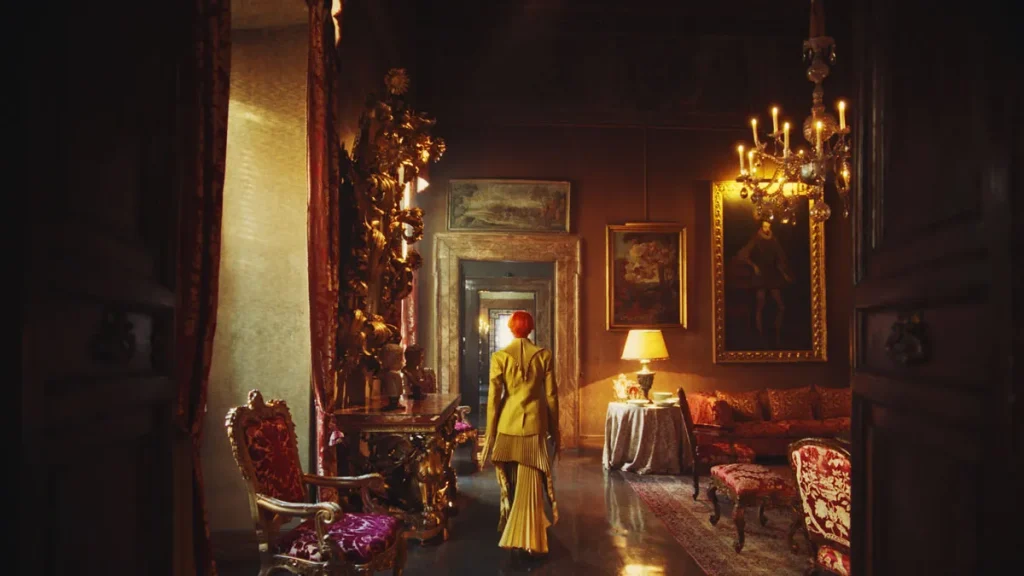Introduction
London-based artist Sin Wai Kin is celebrated for their captivating exploration of the interplay between narratives and identity. In their latest film, “Dreaming the End,” commissioned by the Fondazione Memmo in Rome, they delve deep into the complex relationships between our bodies, the world, and the formation of our identities.
A Year in Rome
Over the course of a year, Wai Kin created “Dreaming the End” on location in Rome, a city steeped in history and storytelling. The film features recurring characters from the artist’s previous works, The Storyteller and Change, who navigate a looping narrative that draws inspiration from cinematic genres such as thriller, noir, and fantasy.

Rome as a Narrative Hub
Wai Kin’s connection to Rome lies in its rich history and architectural monuments. The city’s narrative-rich environment serves as a powerful backdrop for their exploration of storytelling, history, and power dynamics. Rome’s architecture, including iconic locations like the Villa Medici and Palazzo Ruspoli, plays a vital role in making the abstract aspects of the film tangible.
Surrealism and Speculative Fiction
“Dreaming the End” carries a surreal edge that is amplified by speculative fiction elements, a recurring theme in Wai Kin’s work. The film challenges traditional notions of reality and offers a unique perspective on nonfiction storytelling.
Language as a Character
Language takes centew stage in the film, highlighting its limitations when it comes to representation, particularly regarding issues of gender identity. Drawing inspiration from science fiction authors like Ursula K. Le Guin and Samuel R. Delany, the script pushes boundaries to imagine new forms of language representation outside the gender binary.
Costumes and Time
The characters’ costumes, influenced by Italian designer Cinzia Ruggeri and London-based designer Robert Wun, play a crucial role in visualizing Wai Kin’s concept of collapsing time. These costumes also reference Rome’s ancient monuments, emphasizing the city’s historical weight and the power structures that shape our understanding of beauty and truth.
Transcending Boundaries
Wai Kin’s work frequently challenges societal norms and government regulations concerning transgender bodies. Their previous works, like “It’s Always You,” incorporate elements of drag to explore personal narratives and expand the definition of gender. “Dreaming the End” continues this exploration with its characters and themes.

Breaking the Fourth Wall
The exhibition of “Dreaming the End,” curated by Alessio Antoniolli, features additional elements that break down the fourth wall, offering insight into Wai Kin’s artistic process. Neon wigs worn by the characters in the film and face wipes imprinted with their makeup create a bridge between the artist’s multiple selves, blurring the lines between reality and fiction.
A Decade-Long Friendship
Antoniolli and Wai Kin’s decade-long friendship adds a deeply personal dimension to the film and exhibition. Their collaboration reflects the idea that identities are layered and constantly evolving, mirroring the growth and self-discovery inherent in storytelling.
In “Dreaming the End,” Sin Wai Kin invites viewers to confront the intricacies of storytelling, identity, and language, all set against the backdrop of Rome’s historical grandeur. The film serves as a powerful exploration of how narratives shape our lives and the complex dance between reality and fiction that defines our understanding of self.
Feature image:Sin Wai Kin, Dreaming the End (film still), 2023. Courtesy: SIN WAI KIN/COURTESY THE ARTIST AND FONDAZIONE MEMMO, ROME
5 Short Films On Indian Handicraft You Need To Watch This Weekend!

Contributor






